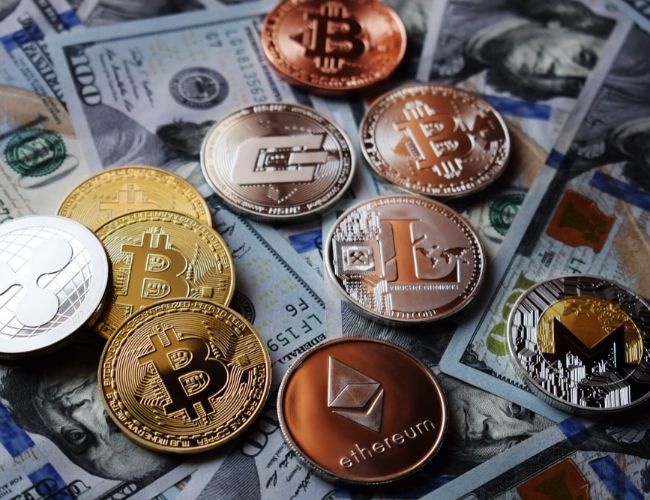Stablecoins’ overall volumes have grown by 10X in just four years, thanks to growing supply. Increased transfers, trading activity, and presence on multiple networks are elevating stablecoins’ importance.
Tether (USDT) and USD Circle (USDC) remain the chief sources of liquidity. Since the market lows and capitulation of 2020, stablecoin activity has recovered, and the 2024 bull market happened with 10X the volumes.
Monthly stablecoin transfer volumes have ~10x'd over the past 4 years.
— Token Terminal (@tokenterminal) June 19, 2024
From $100B to $1T+ per month.
Benchmark value from @Visa:
"During our FY23, the Visa network enabled $15 trillion in total volume." – Ryan McInerney, Chief Executive Officer pic.twitter.com/KxrUyb1IIW
In the past quarter, USDT transfer volume on the TON blockchain also expanded to $5B, after the supply went vertical. USDT also grew its presence to more than 112B tokens, with the largest parts of the supply split between Ethereum and TRON networks. The underlying presence of USDT as a haven is taken for granted in the crypto space.
What is more intriguing is the spread of stablecoins to new networks, and their expansion based on either permissionless or more regulated environments. Base continues to be one of the hotspots for stablecoin inflows, choosing USDC for a safer option with transparent reports.
USDC supply & daily tx count on base
— Token Terminal (@tokenterminal) June 20, 2024
the future of payments is @base(d)? https://t.co/G7gQ1lnADS pic.twitter.com/MtEoR0mqyk
Besides payments, Base also aims to offer options as a FinTech solution, introducing stablecoins for payments. At the same time, Telegram USDT supply also grows by leaps as a tool for trading or direct payments in the chat.
Stablecoins compete to move value
Stablecoins now move as much as $1 trillion in reported value, comparable to mainstream forms of payment. The data may not be entirely clear due to the double counting of some transactions and bot activity. Yet stablecoin traffic has turned essential, especially as a medium for transfers between Ethereum and key L2 blockchains.
USDC also went through an expansion period in May, when its transfer volumes surpassed Tether multiple times. As of June 19, the two tokens were in the same range, with USDT carrying $24.2B in volumes, while USDC at $17.4B.
Yet USDC has changed the landscape of stablecoin usage during the 2024 market. The peak 2021 bull market happened with a much sharper rise in USDT usage, while other stablecoins barely added to the effect. Tether added another 10% of TRON-based USDT in the past month.
The volume and consistency of stablecoins since the start of 2024 is more mature, spreading liquidity to both centralized and decentralized protocols.
Overall, stablecoins were active even during the bear market. Growth since the first crypto boom is now more than 17,000%. Stablecons served to decouple some stablecoins, as the trade of Bitcoin (BTC) against stablecoins was no longer viable.
Stablecoins also spread across many other use cases, including NFT, as well as DEX, liquidity pools, staking and lending. Besides the asset-backed USDT and USDC, the past quarter saw significant activity from DAI, as volumes returned to MakerDAO.
A breakdown by Stablecoin issuer: https://t.co/wWd6qcES3n pic.twitter.com/HaBkxVWPbn
— Token Terminal (@tokenterminal) June 19, 2024
Algorithmic and asset-backed stablecoins are still less influential, but they contributed to overall growth in 2024. As the first half of the year wrapped up, more than $30B in extra liquidity was added through various stablecoins.
Euro-based stablecoins are still a niche asset
The EUR currency is not easily seen as intuitive for crypto trading. Despite the significant adoption of crypto assets in Europe, the biggest usage comes from dollar-pegged assets.
There are only around 31M tokens tied to the Euro, with no significant growth over the past years. Paolo Ardoino, the CEO of Tether, Inc., explained that EURT tokens are not used outside European exchanges, and there is not so much demand for the asset.
IS THERE A MARKET FOR EURO STABLECOINS?
— Token Terminal (@tokenterminal) June 19, 2024
The Idea Maze for a € stablecoin, as explained by @paoloardoino from @Tether_to.
Tl;dr: only a true contrarian would double down on a euro stablecoin business. pic.twitter.com/1JW4vC8HmS
The EURT token is not even used for currency risk between startups, due to the more intuitive dollarization. For now, USDT has also stalled in its other attempts to offer tokenized currencies.
Stablecoins also offers one of the most viable examples of tokenizing traditional financial assets. Still, the main function of stablecoins remains a tool to lock up gains and seek returns during a bull market.
Cryptopolitan reporting by Hristina Vasileva
 cryptopolitan.com
cryptopolitan.com
